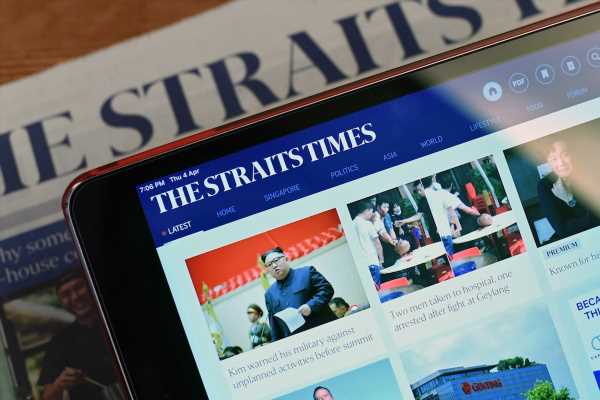YouTube launched its YouTube Music service in Singapore last week, taking on music streaming rivals such as Apple Music and Spotify.
This music streaming platform debuted in 2015 and was relaunched last year with a new music-focused mobile app (available for iOS and Android).
It has an advertisementsupported free tier, as well as a paid version, YouTube Music Premium, priced from $9.98 monthly.
With the paid version, subscribers do not receive advertisements, can play songs in the background and can download songs and music videos for offline listening.
Also introduced was YouTube Premium, which offers a similar advertisement-free experience and offline downloads for regular YouTube videos from $11.98 monthly.
In addition, YouTube Premium subscribers have access to the YouTube Music Premium service.
Family plans ($14.98 monthly for YouTube Music Premium and $17.98 monthly for YouTube Premium) are available for up to five other family members at the same residential address.
Note that you have to pay $3 to $5 more monthly, depending on the plan, if you subscribe to YouTube’s paid services via Apple’s App Store. This is probably because Apple takes a 30 per cent cut from developers for in-app purchases including subscriptions.
While there are several music streaming services available in Singapore, the biggest player is Spotify, which counts 113 million paid users worldwide and offers a song library of around 50 million. How does YouTube Music compare with Spotify?
THE GOOD
Google has so far declined to reveal the size of YouTube Music’s song library. But YouTube Music offers more than just songs from the music labels – it has live performances, remixes, covers, music videos and other user-uploaded content.
For titles that are available as a song and as a music video, users can seamlessly switch between the two via a toggle in the app.
Free users can select any song and skip tracks as often as they like for YouTube Music, unlike Spotify’s free tier for mobile, which has limits on skipping songs and song selection.
The YouTube Music app has a smart download feature that will automatically download songs to your phone overnight using Wi-Fi, based on your listening habits and preferences, so that users will have songs for their daily commute.
Users need only allocate a specific amount of device storage for the downloads.
There is no hard limit on the number of songs that can be downloaded to a device – it all depends on the amount of internal storage available.
This is unlike Spotify, which caps the limit at 10,000 songs per device.
THE BAD
YouTube Music cannot be played in the background for free users, which means the smartphone screen is always on and hence drains the battery. In contrast, Spotify lets free users play songs in the background.
Paid users for YouTube Music can stream music at up to 256kbps (kilobit per second) in quality, compared with 320kbps for Spotify Premium users.
Free users are limited to 128kbps for YouTube Music and up to 160kbps for Spotify.
The user’s YouTube Music search history is saved to his or her regular YouTube search history, potentially cluttering the latter with undesired music-related terms.
I would have preferred for the two platforms to be separate. Of course, there is no such issue with the audio-only Spotify.
YouTube Music does not offer podcasts in its app, unlike Spotify. Instead, Google has a separate Podcast app. But podcasts are a rapidly growing segment. Spotify, for one, is investing heavily in exclusive original podcasts.
If you are worried about data usage from streaming music on the go, YouTube Music may not be for you.
While M1 and Singtel offer unlimited music streaming using mobile data for Spotify, there is currently no similar waiver for YouTube Music.
To be fair, YouTube Music has a data-saving option that reduces the audio quality to 48kbps.
Source: Read Full Article
